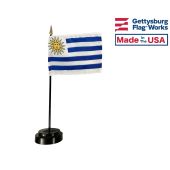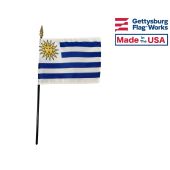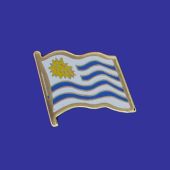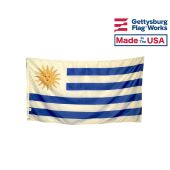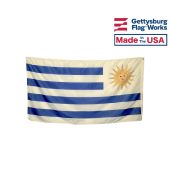Buy Uruguay Flags

Flag of Uruguay
The Uruguay flag was born out of the fires of revolution during the wave of independence wars that swept across South America during the early 19th century. That history gives the Uruguay flag meaning as a symbol of independence and hope for the future, but the flag also exists to stand as a symbol of the nation and its people. The flag is not the first that has flown over Uruguay, but the design has changed very little despite the fact that it has represented the nation for almost two centuries.
- Capital of Uruguay: Montevideo
- Area of Uruguay: 173,620 sq. km
- Languages used in Uruguay: Spanish, Portunol, or Brazilero
- Religions in Uruguay: Roman Catholic, Protestant, Jewish
Colors and Symbolism: Uruguay Flag Meaning
The Uruguay flag has a field that consists of nine horizontal stripes that alternate between white and dark blue. The flag's canton is a white rectangle that is charged with the golden Sun of May, an emblem that has sixteen rays which alternate between waves and triangles when it is depicted on the flag of Uruguay. The flag's nine stripes represent the original nine departments of Uruguay, while the Sun of May represents the vibrancy of the nation. Some stories say that the emblem originated as as symbol of South American independence when the sun burst through the clouds at a revolutionary meeting and was taken as a good omen for the independence struggle, which allows the Sun to serve as a symbol of hope. Other sources trace it back to the indigenous people of the area, which gives the Uruguay flag meaning as a symbol of all of the people who have ever lived in the area.
History of the Uruguay Flag
The flag of Uruguay was designed by Joaquín Luis Miguel Suárez de Rondelo, the first man to serve as the territory's head of state. His original design differed from the current flag in that it had nineteen stripes rather than the nine stripes of the current flag. His original design came into use in 1828, but the number of stripes was reduced to create the current design for the flag in 1830. The flag of Uruguay has not changed since then, which makes it one of the most stable flags in the New World.
